What’s Trending in Aerospace – April 25, 2021
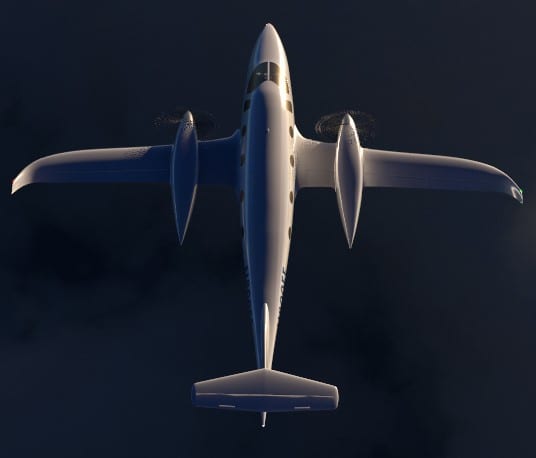
Check out the April 25 edition of What’s Trending in Aerospace, where editors and contributors for Avionics International bring you some of the latest headlines and updates happening across the global aerospace industry.
Business & GA
Bye Aerospace Unveils New Electric eFlyer 800

Bye said they have assembled their first aircraft and others are also on their way. The eFlyer 800 could start production and delivery at the end of 2022 or into 2023. (Bye Aerospace)
Bye Aerospace announced the eFlyer 800, an all-electric twin turbo-prop class airplane that will be able to seat eight people, according to an April 22 announcement.
Bye Aerospace CEO George Bye said they decided to develop an electric aircraft that was geared toward the regional and charter aircraft market but provided the service at a reduced cost and zero CO2 emissions.
The eFlyer 800 will have a 500 nm range with an operational ceiling of 35,000 feet, and 320-knot cruise speed. It will use two wing-mounted electric motors with dual redundant motor windings and quad-redundant battery packs.
Pilatus Chairman to Retire This Summer
Pilatus Aircraft Chairman Oscar Schwenk will be stepping down from his post this summer, as the Swiss business jet manufacturer looks to build on the results they produced last year under the impact of the coronavirus pandemic.
“We have come through a challenging year with flying colours. The operational management team under CEO Markus Bucher has done outstanding work. Surviving the corona year with such a good result is proof that Pilatus is a very healthy company with a sustainable strategy which is fully supported by all. I have therefore decided to hand over the office of Chairman of the Board of Directors to new hands from summer 2021 – now is the right time,” Schwenk said in an April 22 press release.
In 2020, Pilatus delivered a total of 129 aircraft and generated a slightly better operating income than 2019, finishing the year above 155 million Swiss francs.
Commercial
Boeing Chief Financial Officer to Retire in July

Greg Smith will retire from his position as chief financial officer of Boeing in July. (Boeing)
Boeing Chief Financial Officer Greg Smith has decided to retire from the company, effective July 9, 2021. Boeing is conducting a search for Mr. Smith’s successor, according to an April 20 press release.
“I could not be prouder of the 140,000 people who work hard every day to deliver on our promises to all stakeholders and live our foundational values. With the company well positioned going forward, the timing is right for me personally to begin a new chapter outside of Boeing. I will always cherish and be grateful for the experiences I have had, and the relationships I have made, in my thirty years at Boeing,” Smith said in a statement.
Smith was appointed chief financial officer in 2011 and later served in expanded roles as the executive vice president of Finance, Enterprise Performance and Strategy, and more recently executive vice president of Enterprise Operations, Finance and Sustainability.
Boeing has also made the decision to extend their standard retirement age of 65 to 70 for President and CEO David Calhoun, who has been in the role since Jan. 13, 2020.
“Under Dave’s strong leadership, Boeing has effectively navigated one of the most challenging and complex periods in its long history,” Boeing Chairman Larry Kellner said in a statement. “Given the substantial progress Boeing has made under Dave’s leadership, as well as the continuity necessary to thrive in our long-cycle industry, the Board has determined that it is in the best interests of the company and its stakeholders to allow the Board and Dave the flexibility for him to continue in his role beyond the company’s standard retirement age.”
Delta Places Order for 25 Airbus A321neo Aircraft
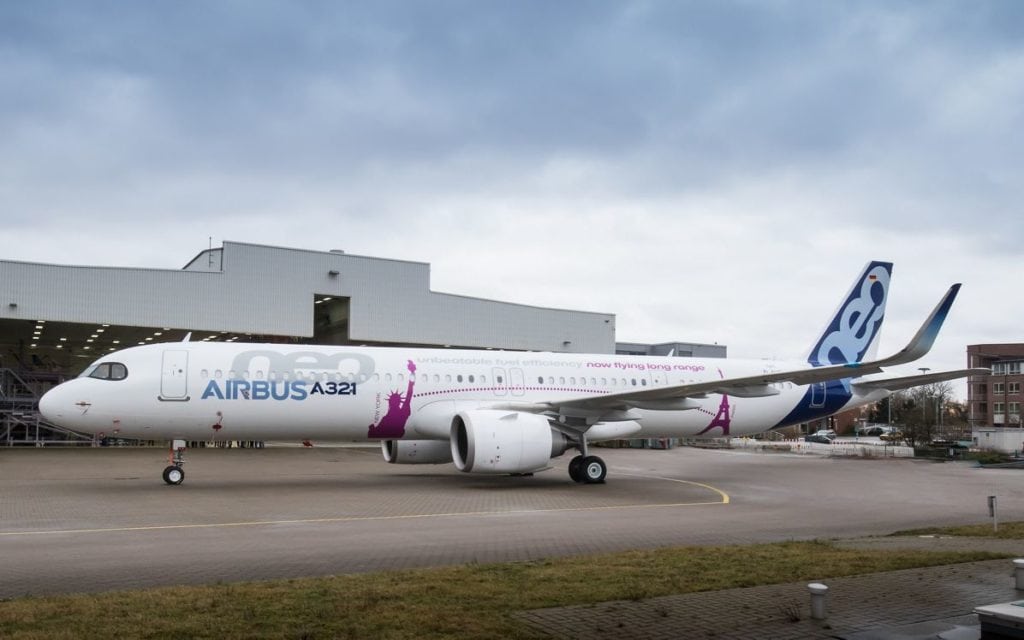
(Airbus)
Delta Air Lines finalized a firm order for 25 A321neo (New Engine Option) aircraft. This is in addition to Delta’s 2017 order of 100 A321neo aircraft. These planes will be powered by Pratt & Whitney PW1100G-JM engines. Additionally, Delta has accelerated delivery of two A350-900 aircraft as well as two A330-900neo aircraft.
“With our customers ready to reclaim the joy of travel, this agreement positions Delta for growth while accounting for the planned retirements of older narrowbody aircraft in our fleet, reducing our carbon footprint, increasing efficiency and elevating the customer experience,” Mahendra Nair, Delta’s Senior Vice President – Fleet Strategy, said in an Aril 22 press release. “We thank Airbus for their steadfast partnership during the pandemic and look forward to working with them as we take delivery of the A321neo as well as our accelerated A350 and A330-900neo deliveries.”
Delta’s A321neos are being powered by Pratt & Whitney PW1100G-JM engines.
OUR&D Invests $50k in SAF
The non-profit organization OUR&D announced a $50,000 grant opportunity for early-stage research into sustainable aviation fuels (SAF), according to an April 22 release.
The request for proposals (RFP) will take submissions for eight weeks on proof of concept ideas for SAF that need further development, according to the release. The company will then review the RFPs over six weeks before announcing a winner.
“We are pleased to be able to make this funding available to scientists who are working on one of the most important technological problems of our time,” Ethan Palay, President of OUR&D’s Board of Directors, said in a statement.“The science is clear, we must eliminate greenhouse gas emissions, and there is no clear path for the aviation industry to accomplish this goal.”
New Digital Glass Cockpit for HX50
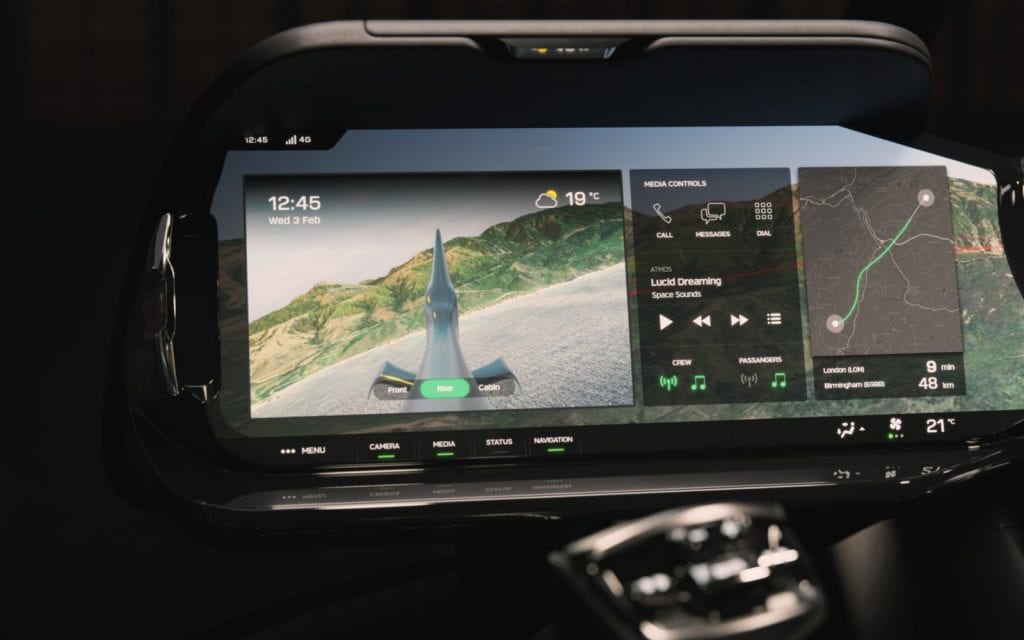
(Hill Helicopters)
Hill Helicopters announced a new digital glass cockpit for the HX50 personal turbine helicopter, according to an April 21 release.
The Hill Digital Cockpit (HDC) integrates and complements iPad-based navigation and flight planning apps through a single control interface, according to the release. It uses high-definition synthetic vision, 21st-century connectivity, and clear instrument indications.
“We designed HX50 to simplify flight and give aspiring pilots the confidence they can fly,” Hill Helicopters President and CEO Jason Hill, said in a statement. “The VFR-optimized HDC is central to this objective. Electronic flight systems available today are generally designed for fixed wing aircraft and are poorly suited to the typical missions of VFR private helicopter operators. We designed a simple, elegant digital cockpit that blends aerospace integrity with the very best of automotive and industrial design to provide unparalleled improvements in situational awareness. This delivers a near effortless flying experience, simplifies training, delivers optimal pilot support and oversight, and most importantly, boosts safety by intelligently managing the information flow, which minimizes pilot workload and cognitive demand in all phases of flight.”
Connectivity
KLM Starts Operating First 737 Flights with Viasat In-Flight Connectivity
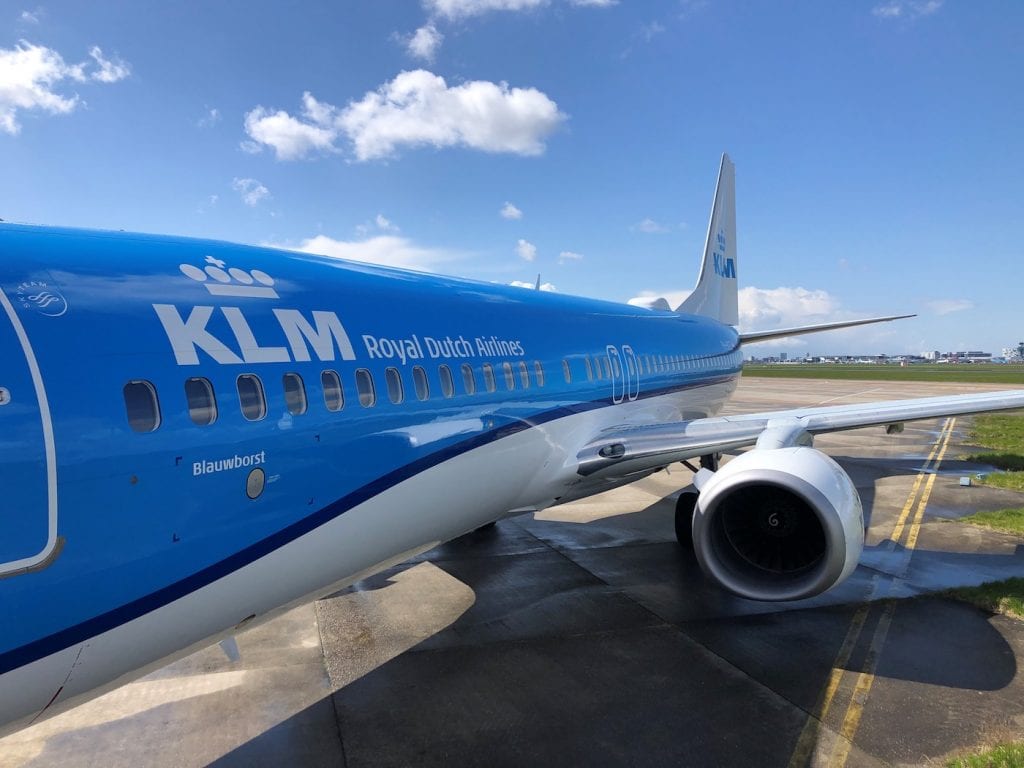
KLM Royal Dutch Airlines has started rolling out Viasat in-flight connectivity across its Boeing 737-800 fleet. (KLM)
KLM Royal Dutch Airlines has started operations of its first Boeing 737-800 to feature in-flight connectivity (IFC) provided by Viasat, according to an
The Amsterdam-based airline is on schedule to equip it’s entire 737-800 fleet with Viasat IFC by the end of 2022, according to an April 22 press release. Viasat’s IFC service will be added to 18 total 737s operated by KLM.
Viasat first confirmed KLM’s selection of its latest satellite connectivity technology in a second-quarter 2020 earnings report. The service is initially being introduced in three packages that include free messaging, and two tiers of access to basic Internet services as well as an option for full video and audio streaming.
“On-board Wi-Fi is an important service that customers want to enjoy for the entire duration of their journey. KLM’s Internet service is already being used extensively on our intercontinental flights. Through this partnership with Viasat, we are ensuring that our customers can be online on European flights as well,” Boet Kreiken, EVP Customer Experience, said in the release.
Widerøe to Trial Inflight Dublin’s Wireless IFE System
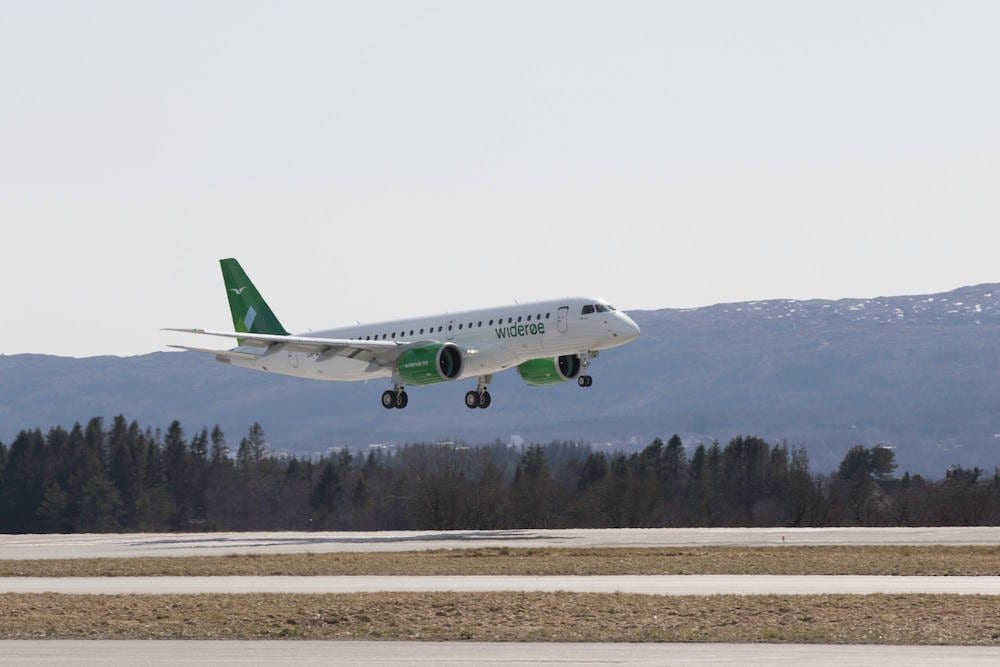
(Widerøe)
Norwegian regional carrier, Widerøe, will begin operating flights with Inflight Dublin’s wireless in-flight entertainment (IFE) system, Everhub, as part of a six-month trial.
Everhub is Inflight Dublin’s DO-160G certified portable server that can run off battery or aircraft power, and features browser-based content with removable SSD cards.
“Taking the first step into the inflight entertainment space is something we have wanted to do for some time and we are excited to be working with Inflight Dublin to further enhance our passengers’ journey. The Everhub solution is impressive and we look forward to offer this to our customers and benefit from the potential revenue opportunities the system has to offer,” Knut Anders Enoksen, Widerøe’s manager of its ancillary products and loyalty program.
Military
Boeing Announces Delivery of Second F-15EX to USAF Ahead of Schedule

The second F-15EX arrived at Eglin Air Force Base to begin testing with the first EX that was delivered last month. (Boeing)
Boeing said that it delivered a second F-15EX fighter aircraft to the U.S. Air Force on Apr. 20—a delivery that the company said came “earlier than the contract requirement.”
Both of the F-15EXs are at Eglin AFB, Fla. for testing.
Prat Kumar, Boeing vice president and F-15 program manager, said in a statement on Apr. 21 that “along with state-of-the-art avionics and survivability suite, the new F-15EX includes almost 3 miles of high-speed digital data bus to enable open architecture, which will keep it evolving ahead of threats for decades.”
The Air Force is to buy 144 F-15EXs, which will feature an Open Mission Systems architecture to enable faster avionics upgrades.
In July last year, the Air Force awarded Boeing an Indefinite Delivery/Indefinite Quantity contract for up to 200 F-15EXs. The Air Force said that the first F-15EX bases will be located in Florida and Oregon.
Airbus Completes Flight Testing for A400M Helicopter Refueling Certification

Airbus has completed the flight testing portion of its A400M new generation airlifter’s helicopter air-to-air re-fueling certification campaign.
The company’s defense division aims to achieve full helicopter air-to-air refueling certification later this year with the conclusion of all mandatory night operation trials, according to an April 19 press release. The flight tests, performed in coordination with the French Armament General Directorate (DGA), involved operations with two French Air Force H225M helicopters.
“The campaign took place in day and night conditions over the west coast of France at between 1,000 ft and 10,000 ft and flight speeds as low as 105 knots. During those flights, a total of 81 wet contacts and transfers of 6.5 tonnes of fuel were achieved, which included simultaneous refueling of two helicopters for the first time,” Airbus said in the release.
Embraer to Study Unmanned Aircraft System Development for Brazilian Air Force
Through a newly signed memorandum of understanding, Embraer and the Brazilian Air Force (FAB) have established a cooperation to study the necessary capabilities for the conceptual design and development of an advanced unmanned aircraft system (UAS).
“This is a unique opportunity for the Brazilian Air Force to deepen its studies in disruptive technologies that may cause an imbalance in current and future scenarios,” Brazilian Air Force Commander, Lieutenant-Brigadier Carlos de Almeida Baptista Junior, said in an April 23 press release. “In modern war, it is essential to use unmanned aerial platforms, operating alone or in conjunction with conventional aircraft. Such technology makes it possible to reduce costs and risks, without losing effectiveness in fulfilling the missions assigned to the Brazilian Air Force.”
The study will analyze and prioritize the operational and logistical elements related to the “development of a superior class unmanned aircraft system,” according to an April 23 press release.
“This study is of fundamental importance for the maintenance and expansion of Embraer’s competencies in the development of aerial defense systems with high technological content and great integration complexity,” Jackson Schneider, president and CEO of Embraer said in the release. “It is also an opportunity for the continuous development of new technologies and products for the FAB and the Ministry of Defense, aimed at expanding the operational capacity and guaranteeing national sovereignty. A major challenge for this aerial system will certainly be its integration and joint operation with other systems and aircraft, manned or unmanned.”
Japan’s RQ-4B Takes First Flight

Japan’s RQ-4B Global Hawk took its first flight in Palmdale, California on April 15, Northrop Grumman announced in a statement.
“The unarmed RQ-4B Global Hawk will provide Japan with on-demand intelligence, surveillance and reconnaissance information supporting the Japan Air Self-Defense Force’s missions of protecting borders, monitoring threats and providing humanitarian assistance in times of need,” Jane Bishop, vice president and general manager of autonomous systems at Northrop Grumman, said in a statement. “This successful first flight is a significant milestone in delivering Global Hawk to our Japanese allies.”
The Global Hawk is a high-altitude, long-endurance unmanned air vehicle that can deliver near real-time on demand data at all times.
Unmanned
Final Drone ID Rules Begin in US Airspace
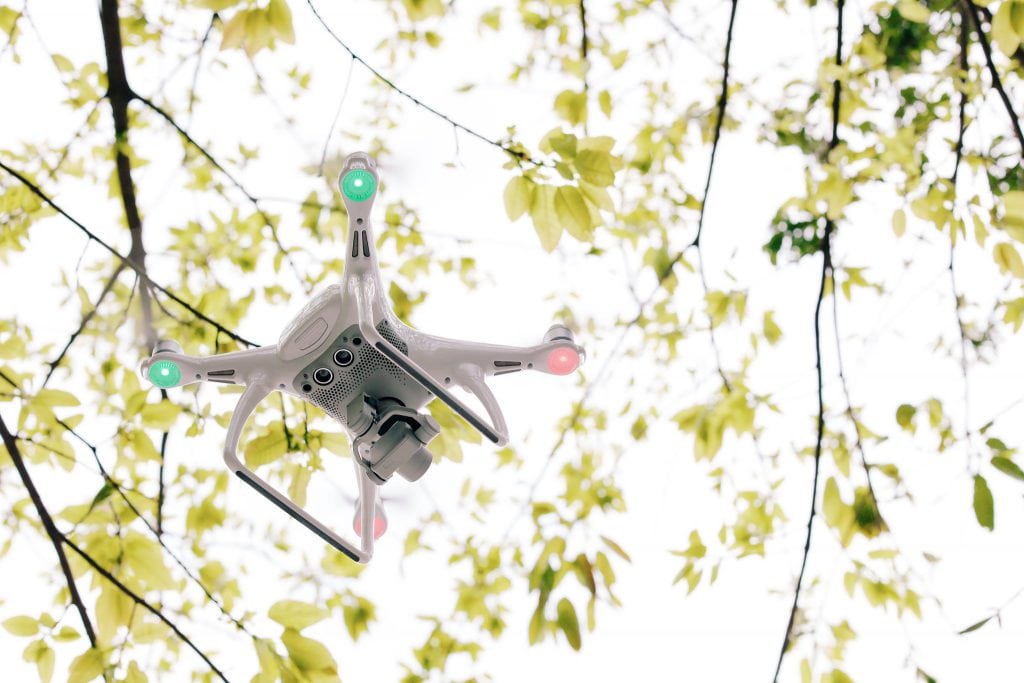
Final rules for drone remote identification (remote ID) and drone operations in the U.S. over people went into effect on Wednesday, according to the Federal Aviation Administration (FAA).
The rules were unveiled in December 2020 and were originally supposed to take effect on March 10 but were delayed amid a regulatory freeze caused by the change in presidential administration.
“Today’s rules are an important first step in safely and securely managing the growing use of drones in our airspace, though more work remains on the journey to full integration of Unmanned Aircraft Systems (UAS),” Secretary of Transportation Pete Buttigieg said in a statement. “The Department looks forward to working with stakeholders to ensure that our UAS policies keep pace with innovation, ensure the safety and security of our communities, and foster the economic competitiveness of our country.”
According to the FAA, the remote ID rule establishes a new Part 89 in Title 14 of the code of Federal Aviation Regulations. Remote ID will work similar to a digital license plate and includes the UAS ID number, latitude, longitude, altitude, velocity, location information about the control station, emergency status, and time mark.
The post What’s Trending in Aerospace – April 25, 2021 appeared first on Aviation Today.
Check FastApn access for commercial satcoms at Fastapn
Flytlink – Avionics, Satcom’s and IFE Consultants






